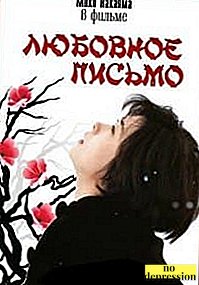As sometimes it is difficult to express your feelings, retell the film, hit the interlocutor with an exact comparison. In such cases, metaphor comes to the rescue. She makes our speech lively, emotional, voluminous, driving. How do imaginative comparisons help us communicate? When used in movies or commercials? Why do psychotherapists invent fairy tales? Maybe it's time strain the brain and plunge into the world allegories.
What is a metaphor
Metaphors are words or whole expressions in a figurative sense, in which the properties of objects far from each other are collected: shades, forms, purposes, origin, character. They make it lively, rich, bright, juicy. With the help of analogy, they help to achieve the effect of the depth of description: clear eyes, golden rays, hard look, velvet night. Without metaphors, we would be forced to continually invent all new words and overload our memory with a heavy load. And our communication would be similar to citing a dictionary or a retelling of regulations.
The term is derived from the Greek word "metaphora"and translated as"carry". Based on bright, unexpected analogies metaphor creates a kind of "feeling of similarity", which conjures up associations, creates images. Due to this, the human brain quickly finds the relationship between the described object and its personal experience.
Most people perceive metaphors as a poetic or literary means of decorating speech, which is little used for everyday communication. This is not entirely true. Metaphors are used everywhere: for explaining material in a lesson, settling a conflict, negotiating, public speaking.
- Metaphor helps to understand the nature of a person or his actions: the soul sings, the soul hurts, the iron nerves.
- She keeps attention on the most important things: the crossroads of life, pour out the soul, turn inside out.
- She works great in school education and communication with children: the spleen is a blood depot; the snow is like a white veil.
- It helps sharpen a sense of humor: during sleep, the cerebral cortex peacefully sleeps, and the subcortex takes over from the watch.
The metaphor enhances a person’s competitive advantages compared to the other person. A person who can speak figuratively, quickly adapts and makes an impression in any company, achieves the desired.
Evolution metaphor
In colloquial speech, we use metaphors so often that we do not realize it ourselves. It seems that they have always existed. It is impossible to name the exact date or the author of the first allegory. But it is known that the first concept was given by Aristotle. He generally considered life to be one volumetric metaphor. Cicero made the statement categorical: "Metaphor is a comparison, abbreviated to a single word.".
It is not surprising that the most ancient allegories and beautiful turns of speech that we use today come from the ancient world:
Achilles' heel - the vulnerable person.
Pandora's Box - the source of many problems.
Procrustean bed - one measure for all.
In ancient Russian literature, metaphors were cultural braces that linked folk life and culture to each other:
River of life - entire life.
Turbid water - a symbol of dishonest actions.
Drooping grass - the personification of grief.
Silver threads - White hair.
Metaphors are present in the names of plants (shepherd's purse, marsh calla), a description of significant dates (Teschin четвер Thursday, forgiveness Sunday) or natural phenomena (crystal water, severe frosts). Some expressions were so transformed that they combined several words and became one: lightning rod, spineless, stalled, advertise.
Metaphor Functions
The creators of colorful allegories are poets, writers, journalists. However, figurative speech patterns attract researchers from various scientific fields: rhetoric, philosophy, logic, linguistics, cognitive psychology, and cinematography. People owning the art of figurative speech are considered to be excellent interlocutors or storytellers. They are able to speak in pure language without repetition, banalism or "verbal garbage" and literally hypnotize the listeners in their own words.
In addition to defining metaphors, linguists also describe its functions. In 1992, Doctor of Philology, Professor V. Kharchenko published a scientific study, according to which there are 15 functions of metaphorical revolutions. Let us dwell on the five main ones:
- Informative - the purpose to convey information in detail and figuratively.
- Styling - takes part in the construction of a recognizable literary style.
- Text forming - used to enhance the image, especially tracked in lyric poems.
- Genre - participates in the creation of a particular genre.
- Emotional and evaluative - creates the background of the work, helps the author convey his attitude to the situation, the hero or his actions.
The most cited masters of metaphorical revolutions - A.S. Pushkin, M.Yu. Lermontov, V. Mayakovsky. But not only classics are famous for figurative speech. Modern authors actively apply these techniques in their creations. The author of the Harry Potter books, JK Rowling, said that Professor Lupine’s werewolf disease in a figurative sense indicated HIV. And the division into muggles (ordinary people), Mudbloods and purebred wizards metaphorically describes xenophobia.
Types of metaphors
Linguists divide metaphors into 6 types:
Deleted (epiphora)
They entered our vocabulary so long ago that they do not even belong to artistic speech:
Bottleneck.
Sleeve of the river.
Roaring ocean
Chair leg.
Skillful fingers.
Sharp (diaphors)
They combine contrasting words to enhance the effect of allegory:
An explosion of emotions.
Medulla mouth.
Bitter truth.
Exaggerations
With their help, we intentionally increase the scale of what is happening:
Huge as a rock.
I reminded you a thousand times.
I haven't eaten for a hundred years.
Impersonation
When an inanimate object is attributed to character traits or human behavior:
The moon hid behind a cloud.
The wind howled stronger than the wolf.
"The Dnieper River roars and groans wide ... ", - T. Shevchenko.
Substitution (metonymy)
Replacing one word with related concepts:
Silverware - instead of silverware
Drink Hypericum - instead of I drink tincture of Hypericum.
Drank three bottles milk - instead drank a liter of milk.
Deployed
They are usually used in literature and can unfold over the whole sentence or paragraph:
"… Dream magical fascinated
All is shrouded, all is bound,
Easy downy chain… ", - F. I. Tyutchev wrote in the poem "The Enchantress in Winter".
Apt metaphors transformed into aphorisms, with which many describe their lives. Or put the status in the social network:
Do not know how to sing, do not drink.
The only way to live well is to go where it is bad.
You need to fear not death, but empty life.
Metaphors in art
Most often metaphors are used. in literature for artistic beauty. But they are also used in other types of art: painting, architecture, music, cinema.
In architecture The most striking example of the metaphorical image are Atlanta and Caryatids, supporting roofs and balconies. Support in the form of human figures are made for a reason. Male figures are associated with force, female - with harmony.
In painting Visual allegories are considered a mystery to the viewer. For example, art historians are still arguing about the pictures Constancy of Memory by S. Dali and Malevich’s Black Square. And the paintings of N. Roerich or Bosch are overflowed with images and allegories.
In the film industry Accurate metaphors are used for movie titles. This is "Rain Man", "Hotheads" or "Dirty Dancing." In the films themselves, subtle allegories convey mood and tonality, draw attention to imperceptible elements, hint and intrigue.
In advertising Metaphors reinforce the desire of the buyer to cause pleasant associations with this product:
Aroma of life - deodorant.
Life force - Black Pearl.
Mother's love - chocolate Kinder.
Magic color - hair dye.
Taste of nature - lollipops.
Metaphor: what is it from the point of view of psychotherapy
Psychotherapists refer to a metaphor to help a client understand or survive a personal problem. Especially in the first meetings, when the client does not know how to formulate a request, says "a lot and about nothing." In this case, the psychotherapist remembers or comes up with a story from his life and invites the interlocutor to continue it, to express his attitude. The purpose of such stories is to initiate associations that will help the psychoanalyst to understand the problem of the client.
Sometimes metaphorical allegations lead the client to find a solution to the problem. For example, he is invited to participate in a fictional story. The client associates himself in turn with all the participants of the scene, even with the inanimate (tree or chair). Immersion in each role helps him to look at the problem from the outside and find a solution. Such a psychological "eyeliner" with associations is much more effective than direct advice.
Metaphors are the main method of psychotherapy with children or teenagers. A child of three or five years can not be forced to speak about something. Sometimes the truth is simply impossible to distinguish from children's fantasies. To understand the problem, the psychologist offers to play, draw or do modeling. For example, in order to find out the attitude towards parents, brothers or sisters, a child is offered to draw them or make clay from clay. If a child molds one of the parents with a worm, and another with a dragon, it becomes clear who he is afraid of or dislikes.
In addition, the therapist's beautiful, memorable, lively speech helps to establish communication with the client.
Fairy tale therapy: a fairy tale about me
It happens that the problem of life to solve logically fails. When the rational part of the brain gets tired, fairy-tale therapy comes to the rescue, capable of captivating, cheering and curing at the same time. Sometimes it helps to solve a deadlock. It is not surprising, because fairy tales, legends and proverbs have long been used to train a person with the help of figurative meanings. Then they became a tool for children's learning and gradually moved into psychotherapy.
At a fairy-tale therapy session, the therapist suggests the client to invent a fairy tale about himself and listens carefully. If on some plot the narrator stumbles, expresses alarm, the psychotherapist helps clarify the mechanism of failure. If the story ends in an unpleasant event, the psychologist offers alternative solutions, helping the client to get around the traps and unpleasant situations.
In working with children, the main storyteller is the therapist. He offers a story and follows the child’s response. Sometimes they hold group sessions with costumes, dolls, decorations.
Findings:
- Metaphors are built on the external or internal similarity of two concepts, generate the necessary associations.
- Knowledge of famous metaphorical expressions helps preserve national identity.
- The power of therapeutic metaphors is used in psychotherapy to help a person find his own resources and solve personal problems.
- Fairy tale therapy comes to the rescue when logic does not help.



